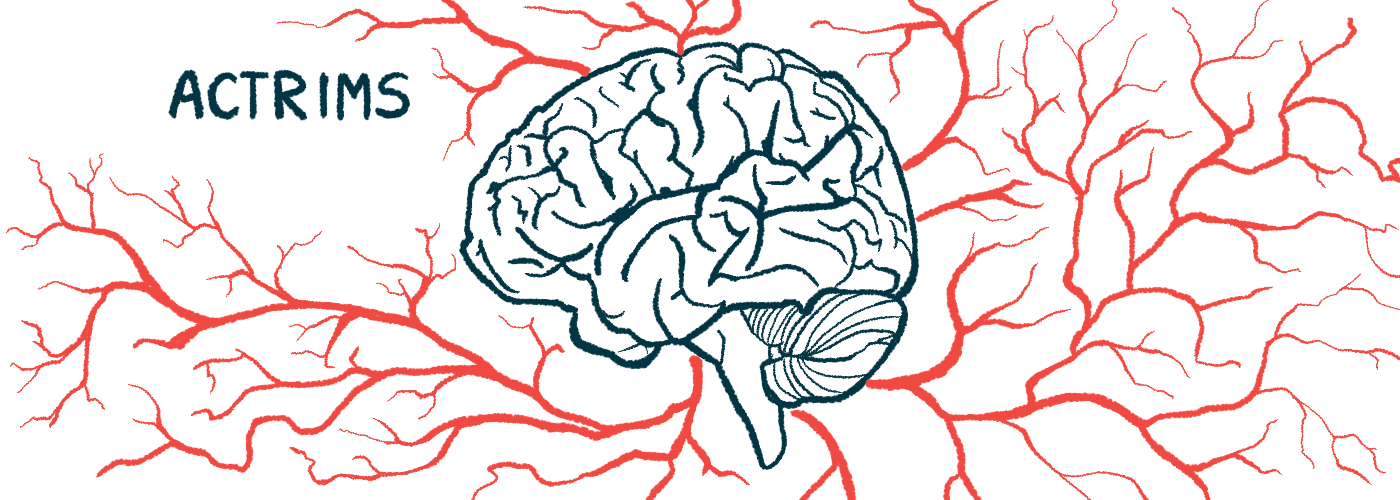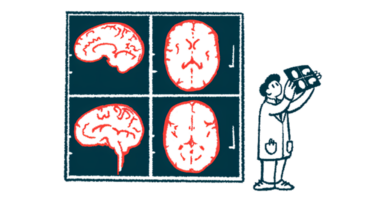ACTRIMS 2024: MRI Paramagnetic rim lesions tied to cognitive decline
Patients with PRLs did worse on tests at study's start, gap widened after 4 years

The presence of paramagnetic rim lesions (PRLs), which represent areas of damage in the brain and spinal cord with chronic active inflammation, may help identify people with multiple sclerosis (MS) who are more likely to have cognitive decline over time.
That’s according to four-year data presented by Hannah Schwartz, a research assistant at Weill Cornell Medicine in New York, at the Americas Committee for Treatment and Research in Multiple Sclerosis (ACTRIMS) Forum 2024, held recently in Florida and virtually.
Patients with PRLs “consistently demonstrated a poorer performance, and that became even more apparent after the four years,” Schwartz said in her oral presentation “Association Between Paramagnetic Rim Lesions and Future Cognitive Performance in Multiple Sclerosis.”
In people with MS, regions of damage show up in MRI scans as lesions. Paramagnetic rim lesions, also called iron-rim lesions or smoldering lesions, are marked by chronic active inflammation that contributes to continuous nerve damage. They are normally identified in MRI scans by a “rim” of immune cells that surround a central core of pronounced myelin damage.
Earlier work has suggested PRLs are associated with worse cognition in MS, but not much data are available on the link between the two.
“Our objective was to investigate the relationship between the presence of PRLs at baseline and cognitive function four years later in a group of patients with MS,” said Schwartz of the study, which included 106 patients (78 women, 28 men; mean age 42.6) with a mean disease duration of 10.9 years. Most (92.5%) had relapsing-remitting MS, where symptoms flare-ups are followed by periods of partial or complete recovery.
Testing cognitive decline
At the start of the study, or its baseline, the median Expanded Disability Status Scale (EDSS) score was 1, indicating “very minimal disability,” Schwartz said. EDSS is a standardized measure of disability that ranges from 0 (no disability) to 10 (death).
Led by Susan Gauthier, a neurologist at Weill Cornell Medicine, Schwartz and her colleagues used an MRI imaging technique called quantitative susceptibility mapping to identify the iron rims that mark PRLs. At baseline, 41 (38.7%) patients had iron rim lesions.
Cognitive evaluations were performed over time with the Brief International Cognitive Assessment for Multiple Sclerosis (BICAMS), a test that contains three individual measures of cognitive function. These include the Symbol Digit Modality Test (SDMT), a measure of cognitive processing; the California Verbal Learning Test-ll (CVLT-Il), which assesses verbal learning and memory deficits; and the Brief Visuospatial Memory Test-Revised (BVMT-R), which rates visual and spatial memory.
Patients with PRLs already performed worse at baseline on all the tests than those without iron rim lesions, but the gap between the groups widened at four years. A significant difference was only observed for SDMT after four years, however.
Cognitive function at the fourth year remained significantly associated with the presence of iron rim lesions even after controlling for factors such as age. Those with at least one iron rim lesion scored on average 4.2 points lower on the SDMT, indicating poorer cognitive function.
Perhaps because 74 (69.8%) patients were on highly effective disease-modifying therapies (DMTs), overall cognitive function improved or was stable over time. However, those with PRLs consistently performed worse on cognitive tests.
Other MRI features associated with greater cognitive decline at four years were baseline lesion myelin damage for the SDMT and baseline total lesion volume for the CVLT.
While the group of patients was small and only baseline MRI data were available, thee results “highlight the importance of just reducing that overall lesion accumulation to preserve cognitive function,” Schwartz said. “We would want large, multicenter studies to replicate these results to evaluate the full potential of PRLs as an imaging biomarker to identify patients at risk for cognitive decline,” who might be treated more aggressively to preserve their cognitive function.
Note: The Multiple Sclerosis News Today team is providing coverage of the ACTRIMS Forum 2024 Feb. 29-March 2. Go here to read the latest stories from the conference.







